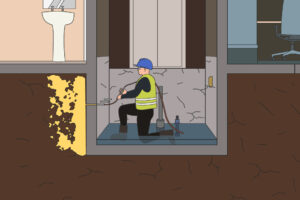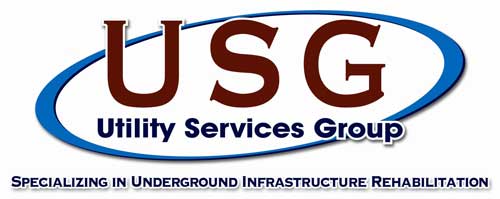Elevator Pit Stabilization with Polyurethane: Safeguarding Against Groundwater Intrusion
Elevator pits, those often-overlooked subterranean spaces, are prone to the threat of groundwater infiltration. Unchecked water ingress can lead to serious structural problems, equipment damage, and costly maintenance. Fortunately, there’s an effective remedy at hand: Elevator Pit Stabilization with Polyurethane.
Understanding the Issue
Elevator Pit Vulnerabilities: Situated below ground level, elevator pits are prime targets for groundwater intrusion. This vulnerability arises from a variety of factors, including high water tables, heavy rainfall, or subpar construction practices. Over time, water can infiltrate the exterior, penetrate voids within the structure, destabilize the soil, and seep through cracks and leaky joints.
The Polyurethane Advantage
Sealing the Exterior: Polyurethane, a versatile material renowned for its excellent sealing properties, proves invaluable in elevator pit stabilization. It forms a robust shield on the outer walls, effectively thwarting groundwater infiltration and maintaining a dry, secure environment.
- Filling Voids: Over time, voids and gaps can develop within elevator pits, providing direct pathways for groundwater. Polyurethane, in its liquid form, excels at filling these voids, creating a solid, impenetrable seal to keep water at bay.
- Stabilizing Soils: Groundwater intrusion poses a risk to the stability of the surrounding soil. Polyurethane can reinforce these soils by infiltrating and expanding within them. This not only prevents soil erosion but also enhances the structural integrity of the elevator pit.
- Sealing Loose Cracks and Leaky Joints: As elevator pits age, cracks may appear in the structure, and joints can begin to leak. Polyurethane’s unique properties allow it to flow into these cracks and joints, effectively sealing them and halting further water infiltration.

- Assessment: The initial step in elevator pit stabilization is a comprehensive assessment. Experts evaluate the extent of damage and identify potential entry points for groundwater.
- Surface Preparation: The exterior surfaces are cleaned and prepared to ensure proper adhesion of the polyurethane.
- Polyurethane Application: Polyurethane is applied to the exterior walls, voids, cracks, and joints, rapidly curing to establish a watertight seal.
- Soil Stabilization: If necessary, polyurethane is injected directly into the soil to enhance its structural integrity.
Benefits of Elevator Pit Stabilization with Polyurethane
- Long-lasting Protection: Polyurethane offers a durable, enduring solution against groundwater intrusion, reducing the need for frequent maintenance and repairs.
- Cost-effective: When compared to traditional solutions, polyurethane-based waterproofing is a cost-effective approach. It minimizes the risk of extensive repairs and elevator downtime.
- Enhanced Structural Integrity: By stabilizing the soil and sealing cracks and joints, polyurethane extends the elevator pit’s lifespan while preventing structural issues.
- Peace of Mind: Property owners and facility managers can rest easy, knowing their elevator pits are well-protected against groundwater intrusion.
Conclusion
Elevator Pit Stabilization with Polyurethane is a proactive, efficient solution to counter groundwater intrusion. It not only safeguards your property from potential damage but also extends the life of your elevator system. Don’t let water-related issues jeopardize your building’s safety and functionality. Consider polyurethane waterproofing to ensure a dry and secure elevator pit environment. Elevate your elevator pit’s protection with polyurethane – it’s a decision that pays off in the long run. Click here to learn more about our Elevator Pit Waterproofing service
